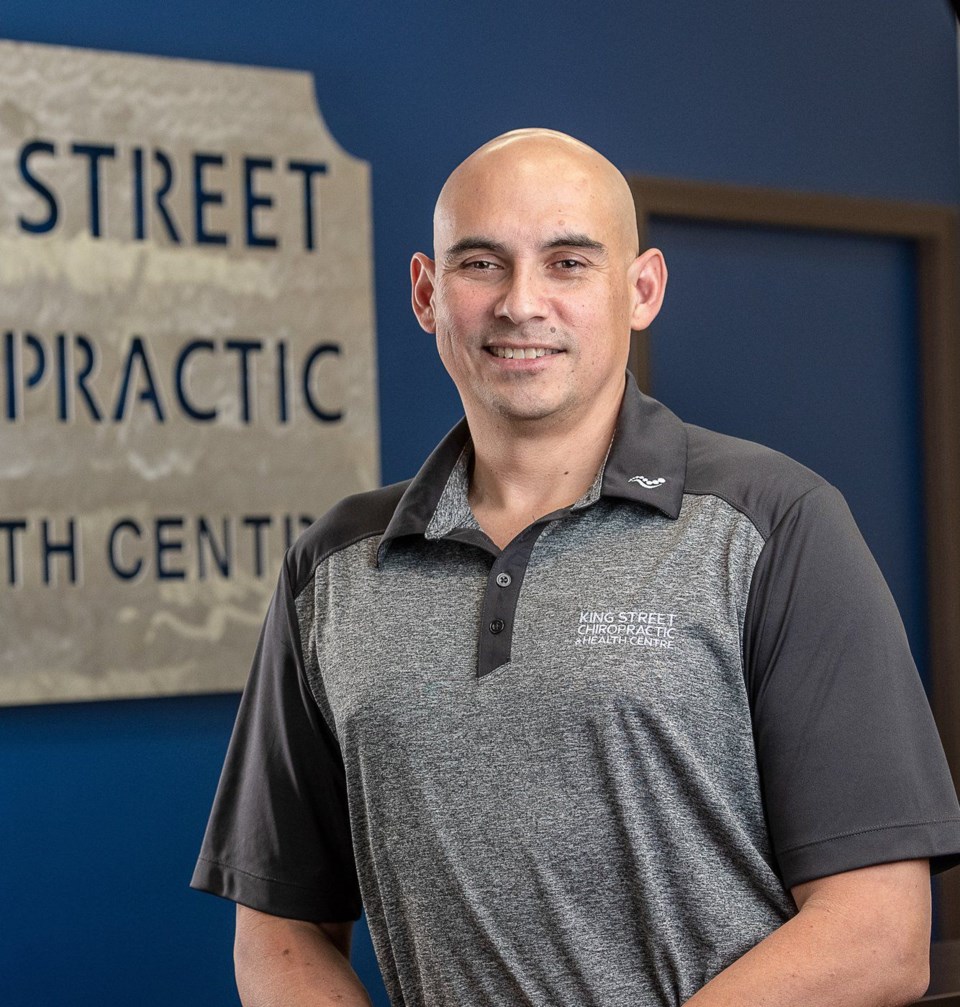ESTEVAN — Finding basic chiropractic care in rural and Indigenous communities can be a challenge but Dr. David Peeace along with other dedicated chiropractors are working to change things.
“We’re trying to increase awareness, because there’s not a lot of chiropractic services for Indigenous people, aside from in urban centres, but rurally there’s very little,” he said. “We find the best outcomes if you see someone, you’re familiar with, and someone culturally you feel comfortable with.”
Originally from the Yellow Quill First Nation, Peeace is located in Estevan.
He is one of the co-chairs of the all-new Indigenous Chiropractic Caucus (ICC).
It was established under the Canadian Chiropractic Association (CCA) to increase musculoskeletal care for Indigenous people across Saskatchewan and Canada.
It all began a couple years ago after Peeace made a presentation on diversity, equity, and inclusion.
As an Indigenous chiropractor, he found little to no chiropractic resources for Indigenous people, and very few Indigenous people in the profession.
Peeace teamed up with his co-chair Jennifer Ward, and the pair gathered other Indigenous chiropractors from across the country and together they formed the caucus. The goal is to be a support network to assist clients seeking services as well as mentor those interested in entering the field.
They have signed a Memorandum of Understanding (MOU) with the CCA.
“When I started practising in Saskatchewan, I was the first and only Indigenous chiropractor in the province,” said Peeace. “That was the case for a number of years.”
He began practising after graduating in 1996 from the Western States Chiropractic College located in Portland Ore.
Despite there being about 9,000 chiropractors in the country, there are few chiropractic services in rural areas, which means very limited exposure to the profession, said Peeace.
“Without exposure or knowledge of it, it’s difficult to think of wanting to get into that profession,” he said.
The CIC is working to establish connections with Indigenous representation in each province, including the FSIN in Saskatchewan, to improve the lives of Indigenous people.
It's also working with the CCA to lobby the federal government for increased coverage of chiropractic services. The Non-Insured Health Benefits plan stopped covering chiropractic services for Indigenous people several years ago.
Peeace said without medical alternatives in rural areas people will turn to family physicians, over-the-counter anti-inflammatory medication, and prescription drugs to alleviate discomfort and pain.
“That’s what we’re finding this to be part of the problem, as we’re looking at the opioid crisis,” said Peeace.
“A lot of people that suffer from opioid addictions was initially from pain,” he said. “What we offer is non-pharmaceutical base care, so we can help them not get to the point where they have chronic pain and need stronger medication to help.”
According to Peeace, people who see chiropractors for pain are 50- to 70-per cent less likely to get into opioids.
This desire to help the Indigenous community is what initially inspired him to get into medicine. Peeace grew up with grandparents who had health challenges and wanted to do his part to help.
After hurting his back tree-planting, he visited a chiropractor and was impressed by the care he received, and how it incorporated elements of traditional healing.
Nearly 30 years into the profession, Peeace is still passionate about making Indigenous lives better.
“I still enjoy helping people achieve the goals they want – not just being out of pain, but a grandparent who wants to be able to play with a grandchild, or someone who still wants to play a sport,” said Peeace.
“I just hope we are able to reach out and connect with more people, more Indigenous communities. For me, that change is very important.”




